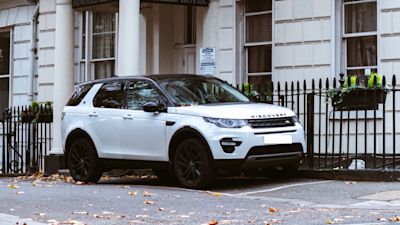Why are inner city London boroughs home to the most SUVs?

The largest SUVs are most popular in some of London's most inner city areas, a new report has found.
Far from trundling across mountains as advertising would suggest, the top three districts in the country for the cars are Kensington and Chelsea, Hammersmith and Fulham, and Westminster.
A report from the think-tank New Weather Institute found on average one in three new private cars bought in these areas was a large SUV.
The three boroughs also topped the league table for most polluting cars by UK sales volume(all of which are SUVs).
More than one in five new cars bought in Kensington and Chelsea fall into this category.
It also showed three quarters of all SUVs sold in the UK last year were registered to urban addresses.
The report authors were exploring "how advertising persuaded urban families that they needed the equivalent of two-ton trucks to go shopping, and why that is a problem."
Campaigners claim the statistics are due to car manufacturers using advertising to persuade people it is “normal” to use the vehicles with off-road features for shopping trips, rather than driving in rural conditions.
The borough of Kensington and Chelsea topped the table as the most SUV-hungry area of the country - and is also the Range Rover capital of Britain.
One in ten new cars registered in the borough is a Range Rover.
Andrew Simms, a director at the New Weather Institute and report co-author, said the home of the so-called Chelsea tractor “really is Chelsea”.
He went on: “One of advertising’s biggest manipulations has persuaded urban families that it’s perfectly normal to go shopping in a two-tonne truck.
“They’ve spun the Chelsea tractor factor into behaviour change, but the human health and climate damage done by SUVs is huge and needs to be undone.
“Just as tobacco advertising was successfully ended, it’s time to stop promoting polluting SUVs.”
Robbie Gillett, campaigner at Possible, claimed car companies have promoted SUVs as a “luxury status symbol for far too long”, leading to city streets being “full of them”.
He added: “Advertisers lured us into focusing on the safety and spaciousness of these vehicles, and to overlook that these benefits come at the cost of other road users who consequently are less safe and have less space.
“Advertising agencies working on SUV ad campaigns need to end their role in promoting harmful and polluting products.”
Steve Gooding, director of motoring research charity the RAC Foundation, urged drivers to choose “the right vehicle for the right trip, to cut the size of our carbon footprint”.
But he warned that the term SUV has become “so broad as to be unhelpful”.
He added: “Whilst it’s right to question whether suburban drivers really need a car capable of ploughing over rivers, across fields and up steep hills just to pop to the shops, with all the negative consequences for emissions that entails, other motorists might just be seeking the comfort and convenience of relatively tall but still modestly sized cars that still come with the SUV badge but are economical to run.
“The popularity of the SUV body-style looks like it’s going to be with us for some time, as some auto companies have already released fully electric versions with more to come later this year.”